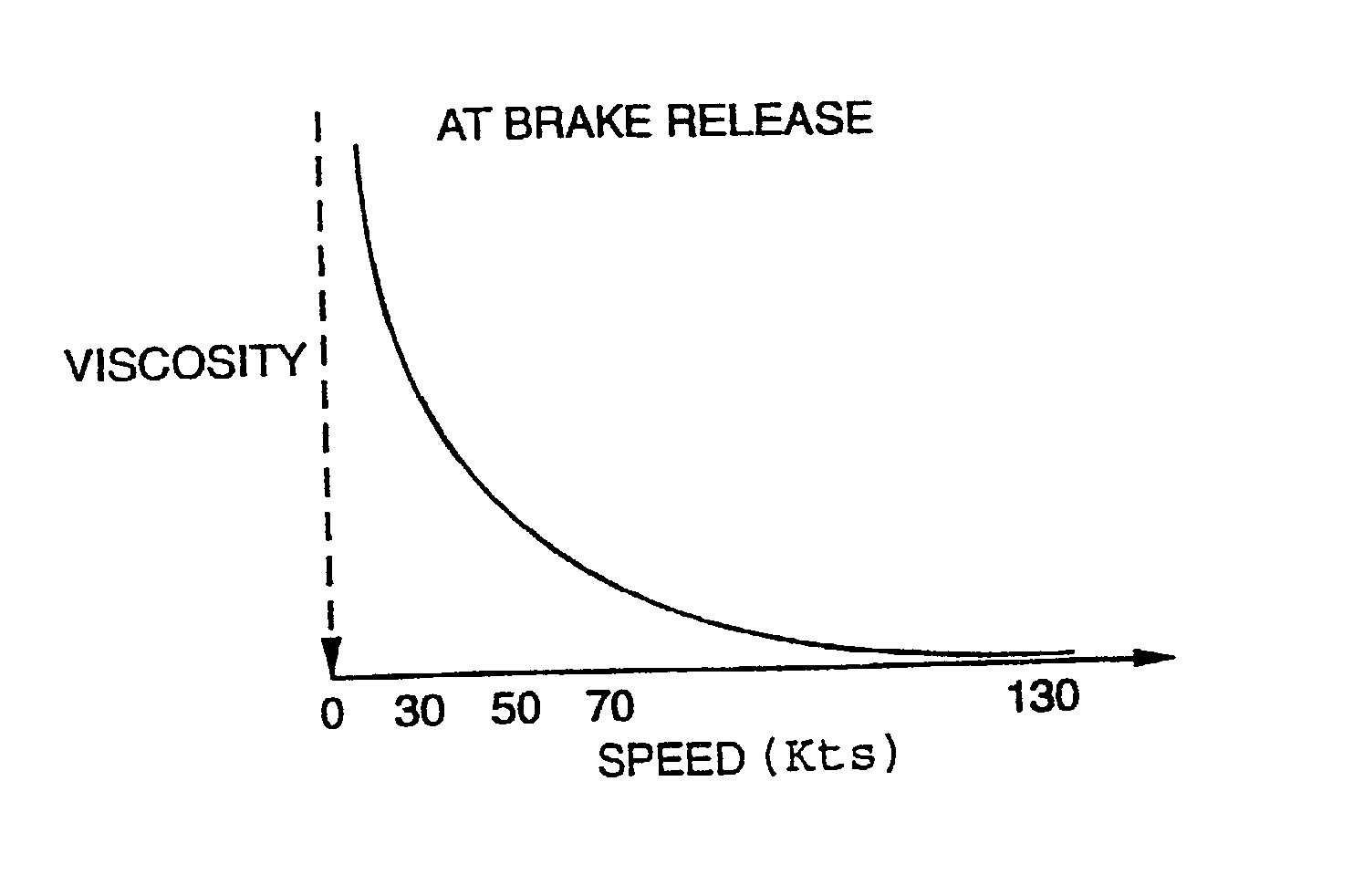Environmentally friendly compositions having anti-icing, deicing or graffiti prevention properties
a composition and anti-icing technology, applied in the field of environmental friendly compositions with anti-icing, deicing or graffiti prevention properties, can solve the problems of major and costly corrosion and degradation problems of metals, concrete, and serious loss of traction, and achieve the effect of rapid shear thinning and high near-static viscosity
- Summary
- Abstract
- Description
- Claims
- Application Information
AI Technical Summary
Benefits of technology
Problems solved by technology
Method used
Image
Examples
example 1
Isopropanol Compositions (Glass Surfaces, Automobile Windshields, Etc.)
[0414] (a) A composition was prepared containing 55.0% by weight isopropanol, 44.0% by weight water, 0.75% by weight xanthan, and 0.25% by weight 1-dodecanol. These components were combined, and applied to the windshield of an automobile. This composition formed a protective blanket to prevent subsequent ice accretion and adherence, and render ice on the glass to be soft and easily removed. The application of the composition occurs by using a mechanical "spritzer" type hand sprayer. However, other techniques include a pressurized can, or by the windshield washer system which has been suitable modified. Overnight windshield ice protection is possible by spraying prior to overnight ice or frost formation.
[0415] The fluid composition was applied in early evening to portions of the windshield of an automobile parked outdoors under freezing conditions in early March 1994. Upon returning to the automobile at 7:30 the n...
example 2
Isopropanol Compositions (Aircraft, Runway, Roadway, etc.)
[0420] (a) and (b) The compositions containing 45.0 wt % isopropanol; 10 wt % propylene glycol; 0.1 or 5.0 wt % xanthan and the remainder being water were prepared. The amount of xanthan is dictated by the desired "static" unsheared viscosity as prescribed for the specific application. No ice formed at -40.degree. C.
[0421] (c) Monolayer forming 1-dodecanol (1.0 wt %) to enhance durability, was added to the compositions of 2(a) or 2(b) (the remainder in water), combined and applied to the surface to provide icing protection. The ice protection results were similar to those of Example 2(a) (d) Similarly, when Example 2(a) or 2(b) are repeated with an addition of 0.1 wt % of 1-dodecanol, similar anti-icing and deicing results are obtained.
example 3
Propylene Glycol Compositions (for Aircraft)
[0422] (a) A composition containing 55.0 wt % propylene glycol, water 44.5 wt %, xanthan 0.5 wt %, based on the combined weights water, freezing point depressant, and thickener, and 1-dodecanol varying in quantity, from just a trace amount (sufficient to form an exterior thin coating, essentially a monolayer) less than about 0.1 wt %, to approximately 2 wt % of total fluid weight.
[0423] For applications to aircraft surfaces, the resultant Type II / IV layer formed for anti-ice protection ranges in thickness from about 25.times.10.sup.-3 mm to approximately 10.0 mm.
[0424] The "shelf-life" of this embodiment composition was in excess of 32 months at about 0.degree. C. Samples stored in sealed light-tight containers and subsequently evaluated exhibited no observed degradation in anti-icing or deicing performance when compared to freshly prepared versions.
[0425] (b) Similarly, when the Example 3(a) embodiment was reconstituted, except that the 1...
PUM
| Property | Measurement | Unit |
|---|---|---|
| Fraction | aaaaa | aaaaa |
| Fraction | aaaaa | aaaaa |
| Fraction | aaaaa | aaaaa |
Abstract
Description
Claims
Application Information
 Login to View More
Login to View More - R&D
- Intellectual Property
- Life Sciences
- Materials
- Tech Scout
- Unparalleled Data Quality
- Higher Quality Content
- 60% Fewer Hallucinations
Browse by: Latest US Patents, China's latest patents, Technical Efficacy Thesaurus, Application Domain, Technology Topic, Popular Technical Reports.
© 2025 PatSnap. All rights reserved.Legal|Privacy policy|Modern Slavery Act Transparency Statement|Sitemap|About US| Contact US: help@patsnap.com



